 |
The Process of Carving: Kokophili
|
|
The Creation of Kokopelli / Kokophili: Part 2
|
PART TWO: THE PRE-PROCESS 2006-2007
When the material weighs about 1,900 pounds, and it is supposed to stand on its point without falling over, a bit of preparation is required—and equipment and effort, not to mention a bit of expert muscular assistance.
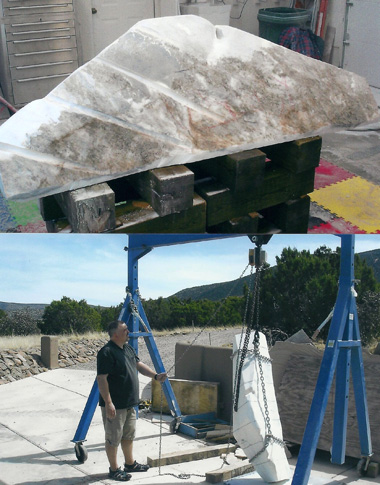
|
 |
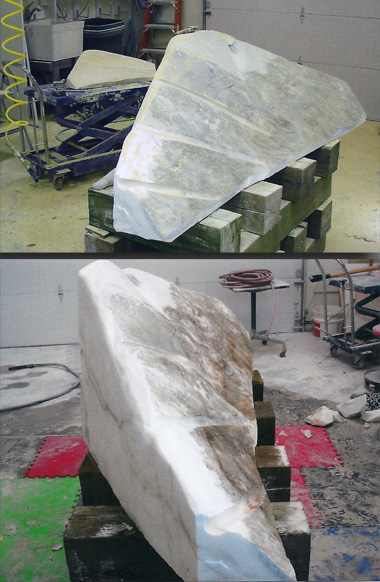 |
- Calculating Precise Dimensions 2006
Now that it’s pinned and upright, the dimensions best be checked again before cutting. It would not be good to end up creating a horn with half a bell, or a Kokopelli with no arms, or only one foot or a head that cracks off.
|
|
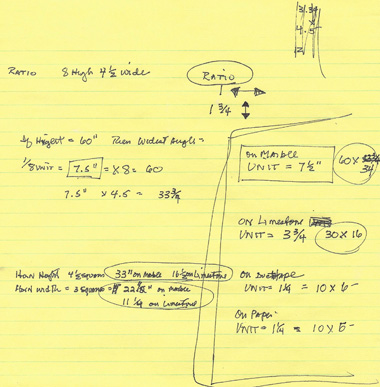 |
Photography #2: Musician and Instrument
Download detailed saxophone diagrams, and take a field trip for more action photos of the featured Kokophili musician.
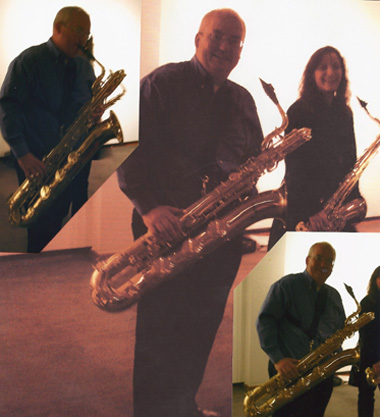 |
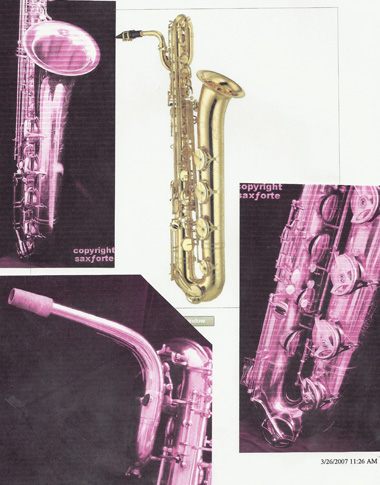 |
Stone Cleanup and Testing
The marble has been split off from a much larger piece that was drilled and split from the mountain. It has been sitting in the stone yard for several years. What portion of this stone is damaged and will not hold form? What portion can be depended on to produce the unflawed beauty we seek?
|
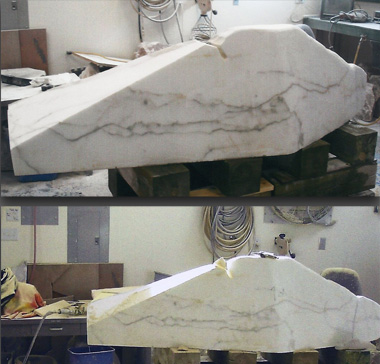
|
Create 3-D Limestone Model
There are so many angles and so many options for discovering the form and using the material. Which is the top side? And which the bottom? Which is the front? Or the back? Which point of the triangle will provide the best saxophone? Which will offer the best colors and shading, and which angle of the bedding plane will provide the proper strength in the right places? More study simply produces more options. The mind spins in confusion. OK, if you can’t get your mind around it all in abstract, then shape a smaller piece of limestone into the exact form of the marble and carve it. Use that as a test. Go ahead and see if it is possible to find room for all the necessary elements in this form. Play it safe. Again, take no risks about being sorry. In many sculptures the form can be adjusted as needed. But everyone knows what a saxophone looks like. There’s no room for hedging or guessing. It would spoil the meaning and the message (not to mention the mood of the artist) if we ended up with a French horn instead of a Barry Sax. |
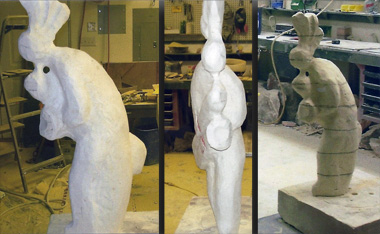 |
Fit the Design to the Stone and Test Again
Yep, again. |
Drilling, Pinning and Setting 2007
Drill a one inch hole through a huge 1,400 pound base plate of travertine at exactly 90 degrees. Drill a similar one inch hole 18” deep into the marble, and make sure that it, too, is at exactly the right angle. Insert a 1” by 26” stainless steel rod, somehow strap the stone so that it swings into a vertical position, hold the pin in without putting your hands at risk under the stone, move the whole apparatus across the drive, straddle the 1,400 pound travertine base that will hold the marble upright and stable for carving, drop the one ton of marble and its pin onto the base perfectly straight so that the pressure of the pin does not split the base edge of the marble, and let it down gently hoping that the holes in the marble and the travertine line up exactly. (note: there is no bend in a 1” stainless steel rod, and there is no give in the pieces of stone). Make sure that everything rests exactly flat since this posture will be its state of rest over the next several years of cutting and whacking. Sure, go ahead and see if that doesn’t bring a bit of anxious sweat to the forehead—especially a forehead that has never tried to do anything quite like this before!
And, if everything works out as planned, one is free to move on to the next step, carving.
Otherwise, back to square one and start over. (Like maybe one more trip to Italy!) |
|
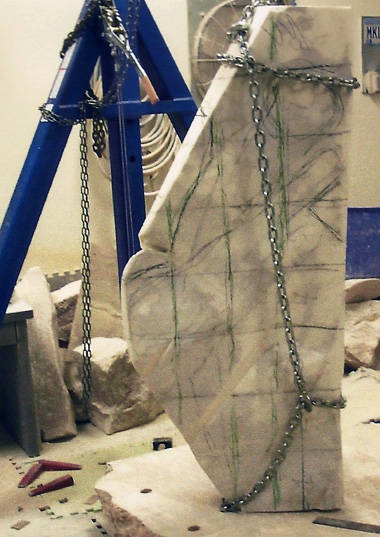
NEXT |
KOKOPHILI: PART 1 | PART 2 | PART 3 | PART 4 | PART 5 | PART 6 |
|
|
|

